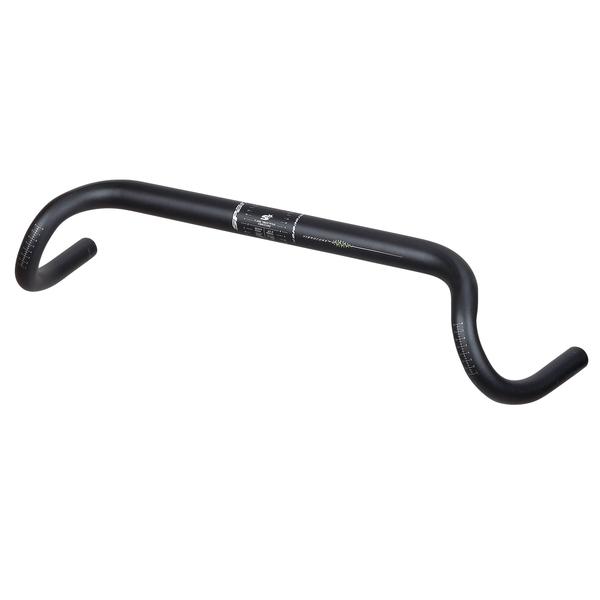Recently I picked up a new Spank Vibrocore drop bar to put on a gravel frame. Actually, to be quite honest, this frame can’t really decide what to be, besides old. It was a prototype 29er I designed in about 2003, had manufactured, and it evolved into a series of frames I designed and sold, back in the early-aughts, when everyone wanted carbon, and no one wanted custom titanium. Last summer, for fun, I refurbished it, put a mix of products that should not have worked together (and, coincidentally, didn’t), and rode it a few times, hoping it would be a fun, throwback hardtail 29er.
As it turned out, mountain bike design has come a long way in 16 years, and this frame, well, hasn’t. It rides exactly like an early 2000’s 29er: tall and tippy. With a straight 1-1/8″ head tube, fork options are increasingly limited, and the steep 71* head tube and 74* seat tube angles point more towards gravel bikes than current mountain bike geometry.
So, after a few rides where I (sort of) proved that you can make DeoreXT thumb shifters, Paul front and rear derailleurs, and 2×10 gearing all play nice for up to 4 shifts, I hung it back up and rode my other bikes.
I was looking at the frame a few weeks ago, and realized that the geometry was actually lining up with many of the mountain-bike-derived gravel bikes that are showing up on the market. They have the same head and seat tube angles, couple with a long top tube (in this case, 59cm), short stem, and wide bars. It occurred to me that with a few parts swapouts, I could put together a gravel-crusher and keep the old machine running.
I dug through my parts bin and found SRAM Rival 10-speed shifters, an old Rival front derailleur, dug up a new GX rear derailleur, and plenty of cables and housing. The fork I had scrounged a year or two ago was still serviceable- a Reba Race SL with Fox stickers on the lowers, another $20 well spent at the consignment shop. I needed bars and a stem.
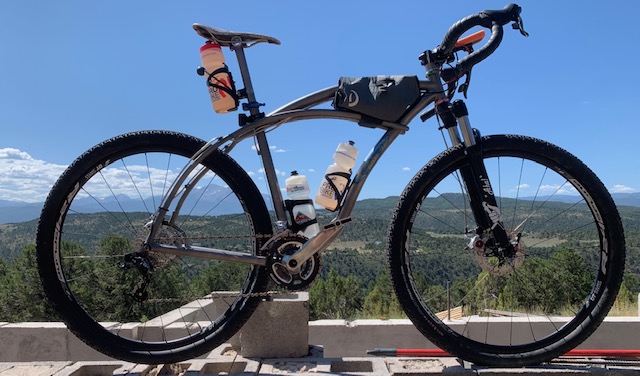
I found a 50mm Kalloy Uno stem for about $15, and then hunted down the Spank bars. They are pretty new on the market, and little has been written about them. The concept is nothing new: a foam insert inside the alloy bar to dampen vibration. It’s been tried many times, to varying degrees of success, and like most ideas in cycling, it comes around again periodically to great fanfare. Looking inside with a flashlight, I could see a green foam that stopped about 3″ from each end of the bar.
Spank has had the flat and riser versions available for a while, but the wide-flare drop bar is new for 2019, and the 25* flare called out to me for singletrack. As mentioned in my review of the FSA gravel bar, the flare is great for technical trails, and I really like the way my wrists clear the upper bar. FSA’s bar flares about half as much, so clearly, this wide flare would be, well, bigger.
I ordered the 46, deciding that big was the keyword, and popped it on the bike. I didn’t weigh it, because I didn’t care what it weighed, installed the levers and cables, wrapped it with FSA tape, and headed out to give it a whirl.
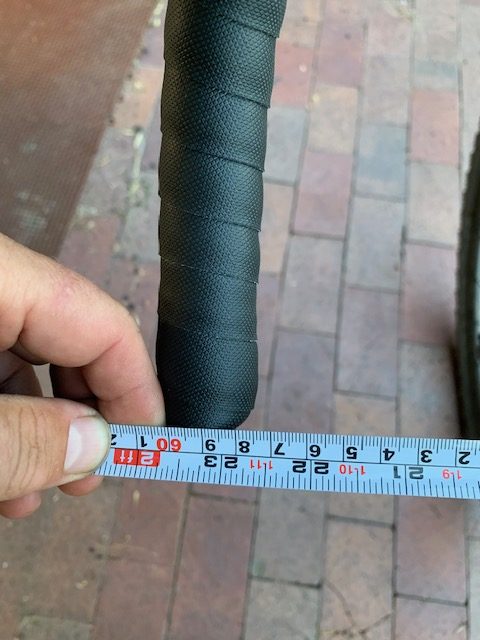
First, I noticed that it’s round. Sometimes things get past me, but I got this. After years of riding FSA’s K-Wing series of bars, I really, really like the flat tops. I find them to be super-comfortable, and even though the Spank bar is fat (31.8mm all the way, no taper at the stem), it was an unusual feeling to my flat-adapted hands. With the plush FSA tape, the Spank bar is big in the hand. It’s just not flat, so it took a bit of getting used to for me. If you have medium or small hands, it may seem huge. That said, it’s still pretty comfortable.
The bars taper down as they roll into the drops, so clamp diameter for shifters is not an issue. The taper is right at the corners and is hardly noticeable, blending nicely instead of an abrupt transition. This also makes clamping stuff near the stem much nicer- bar bag mounts, computer mounts, bells, etc don’t have to fight for a narrow bugled area at the stem clamp.
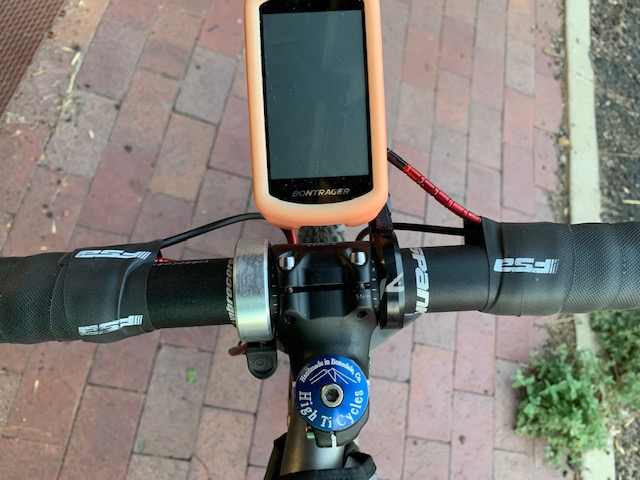
I set the bars and shifters up similar to my road and gravel setups on other bikes, with the tops of the bars and shifter tops level. The flare causes the shifters to cant inwards (so they are in plane with the flare of the bars). At first, this seems odd, but after a few minutes of riding is hardly noticeable. What did catch my attention is how the 10-speed Rival shift paddle swings at a very different-feeling arc than when the shift body is vertical. Again, not a bad thing, but I was aware of it.
During my first ride with the bars, I realized I needed to roll them upwards. I felt like I wanted the lower hooks more vertical- more of a pistol grip than flatter road-style grip. This also rolled my shifters upward, much higher than I ride on my other gravel bike, but combined with the wide flare, I liked it much better.
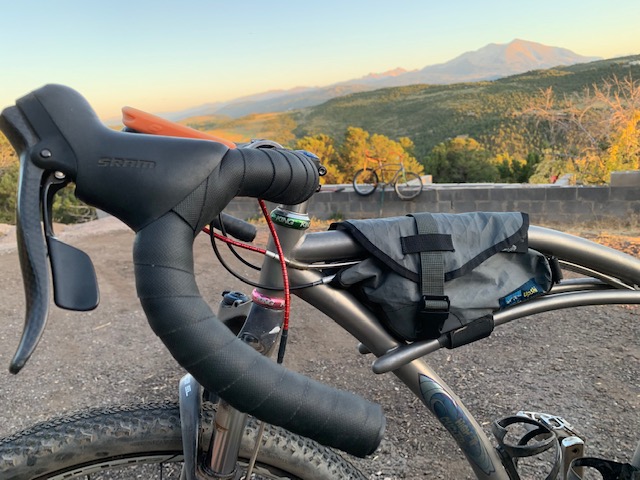
My bike setup did not give me a chance to test the vibration-absorbing aspect of the bars. Riding 700x50c Donnely MSO tires at 30 PSI, coupled with the Reba fork, any high-frequency vibration that was created never made it to the foam. The ride had all surfaces, from buff pavement to roadbase, washboards, loose gravel, large river cobbles, singletrack with chunky rock and root drops, and everything in between.
The bar’s width felt good, and with the angle rolled back, very comfortable. I did miss the nice corner ‘shelf’ that is on the FSA bars, but when perched on the tops or hoods, my hands were never numb or uncomfortable. The corner is my favorite place to ride on the FSA bars, so i just avoided it on the Spanks.
As I started the mildly technical descent and dropped over the first few rocks and roots, I detected a small flaw in my component choice. The Reba fork was starting to explain to me why it had been so inexpensive at the consignment shop- it lost all air pressure and started belching oil out of the left stanchion. Each drop bottomed it out, dropping my head tube by the fork’s full travel, and giving me the sensation that a front-eject was possible at any time.
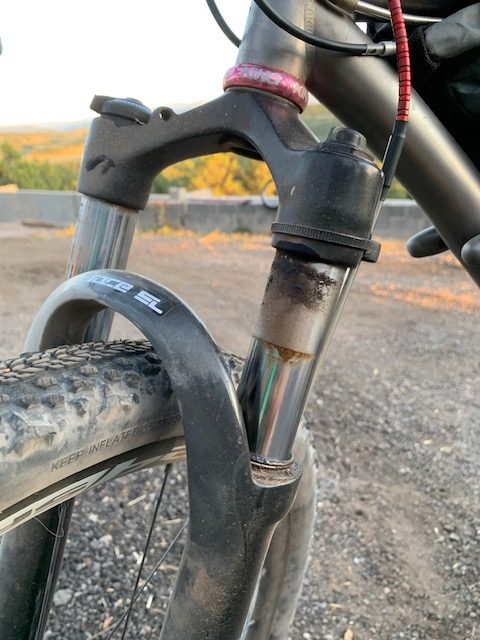
I decided that slowing way down and stopping often to take pictures was a better approach to the trail. There was a good reason to take photos: in 2018, this entire mountain burned in a fire that started at a shooting range on the other side of the hill. Despite Stage II fire restrictions and bans on incendiary rounds at the range, people shooting tracers managed to light a fire that burned over 12,000 acres and destroyed 3 homes.
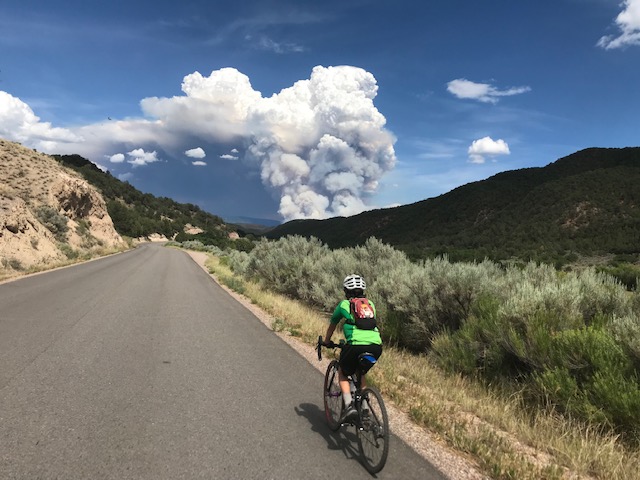
A year later, after a wet winter, I went onto a trail that had been one of my favorites about 10 or 15 years ago, a simple loop with a gravel road climb and fun singletrack descent. The forest, formerly dense, dark, and teeming with life, was silent, ghostly, and heartbreaking. I didn’t hear a single bird, and the burned hulks of trees stood ominously, many threatening to topple in a slight breeze. The soil was blackened, coated in charcoal, and sealed against the rain. High temperature burns will cook the ground, capping it with a crust that resists water. This leads to floods and mudslides, several of which happened this summer.
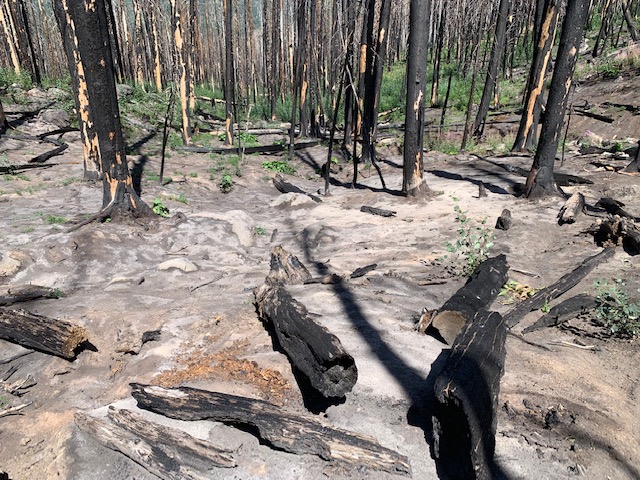
Last year, we watched this fire burning only 8 miles from our house. We were upwind, out of the evacuation zone, and our house smelled of heavy smoke for months. Nightly, we would get out our spotting scope and watch individual trees burst into flames. This year, as I rode through the devastated forest, aspen shoots covered some of the floor, nearly 3 feet high. They were crowding out the fireweed, which had lost its purple blooms and was going to seed. In a few years, this former pine forest will be completely replaced with an aspen grove, itself beautiful, but not really a replacement for what was lost.

As I worked my way down the trail, stopping to look at the devastation and new life, I also got a chance to look farther afield to see ridgelines and views I’d never seen from here. The thick pine forest had obscured all long views, offering instead some shade and a cool escape from late summer’s heat. Today, however, there was no hiding from the sun among the burnt hulks, so I continued down the trail, back to the gravel roads, and back to my house.
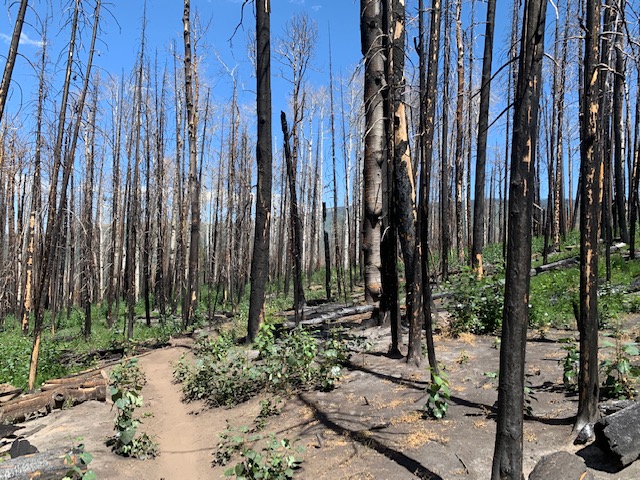
The Spank bar is nice, stiff across the top due to the full-width 31.8mm section, and the flare is comfortable. The wide 25* flare offers stability when in the drops, and it pilots well on singletrack. It takes a few minutes to get used to the pitch of the shifters created by the flare, but within a few minutes of riding it’s hardly noticeable. Weight and price are reasonable, and I think these bars are a good choice for a monster-gravel or bikepacking rig. Overall, despite my affinity for the flat-topped bars, I found them to be comfortable and well-suited to the job.
